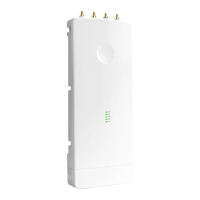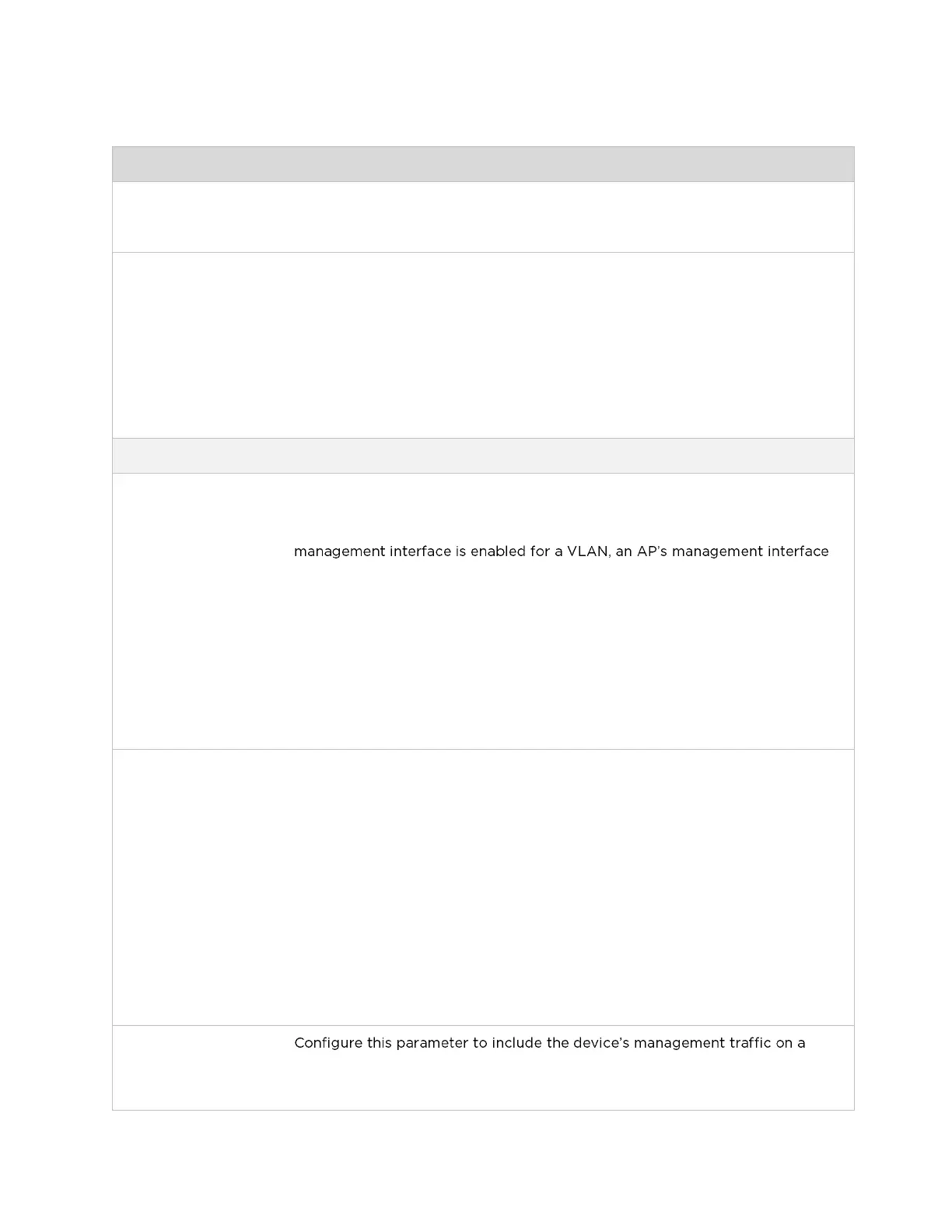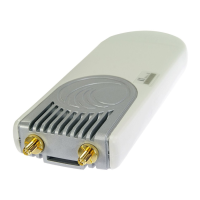CHAPTER 4: USING THE DEVICE
MANAGEMENT INTERFACE
PAGE 4-43
(Subscriber Module
NAT Mode, Router
Mode)
VLAN Priority
(Subscriber Module
NAT Mode, Router
Mode)
ePMP radios can prioritize VLAN traffic based on the eight priorities described
in the IEEE 802.1p specification. Data VLAN Priority represents the VLAN
Priority or Class of Service (CoS). Operators may use this prioritization field to
give precedence to device management data.
This parameter only takes effect if the Separate Wireless Management VLAN
parameter is enabled. Configure this parameter to set the value of the Priority
code point field in the 802.1q tag for management traffic on the configured
VLAN ID originating from the SM. The default value is 0.
Virtual Local Area Network (VLAN)
Management VLAN
(Access Point Mode)
Enabled: The AP management interface can be assigned to a Management
VLAN to separate management traffic (remote module management via SNMP
or HTTP) from user traffic (such as internet browsing, voice, or video. Once the
can be accessed only by packets tagged with a VLAN ID matching the
management VLAN ID.
A VLAN configuration establishes a logical group within the network. Each
computer in the VLAN, regardless of initial or eventual physical location, has
access to the same data based on the VLAN architecture. For the network
operator, this provides flexibility in network segmentation, simpler
management and enhanced security.
Disabled: When disabled, all IP management traffic is allowed to the device.
VLAN (Management +
Data)
(Subscriber Module
Mode)
Enabled: The device management interface can be assigned to a Management
VLAN to separate management traffic (remote module management via SNMP
or HTTP) from user traffic (such as internet browsing, voice, or video. Once the
management interface is enabled for a VLAN, the management interface can
be accessed only by packets tagged with a VLAN ID matching the
management VLAN ID.
A VLAN configuration establishes a logical group within the network. Each
computer in the VLAN, regardless of initial or eventual physical location, has
access to the same data based on the VLAN architecture. For the network
operator, this provides flexibility in network segmentation, simpler
management and enhanced security.
Disabled: When disabled, all IP management traffic is allowed to the device.
VLAN ID
(NAT Mode, Router
Mode)

